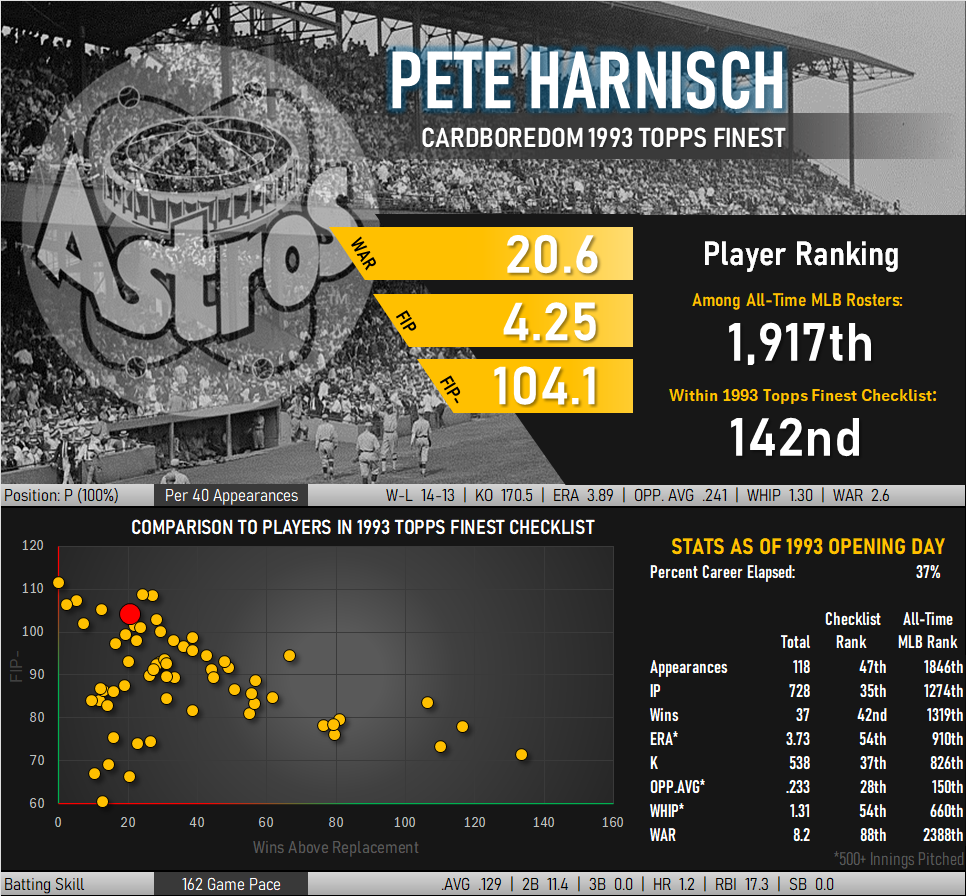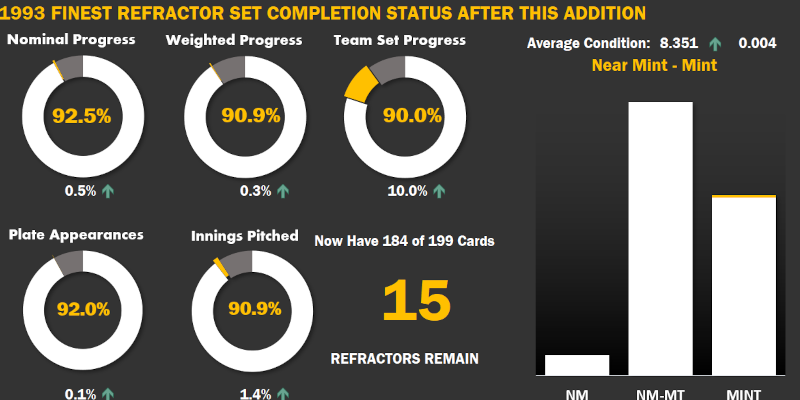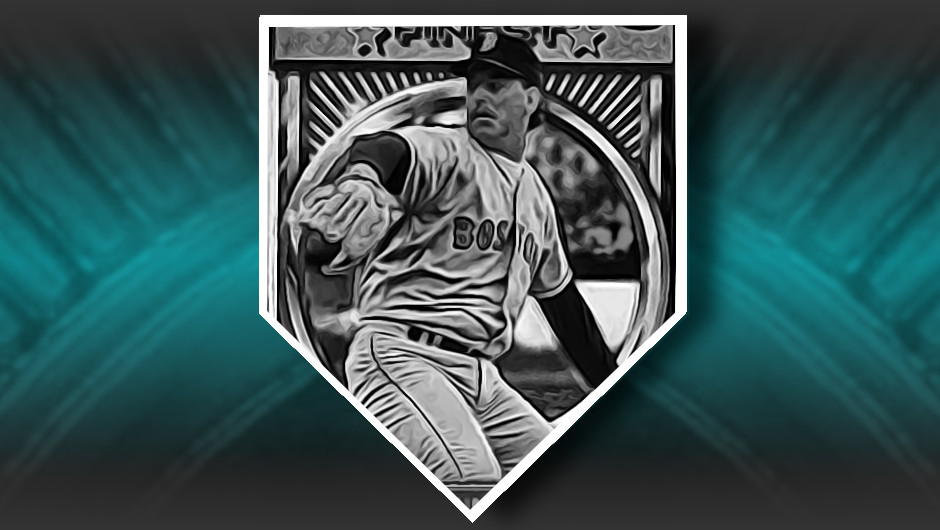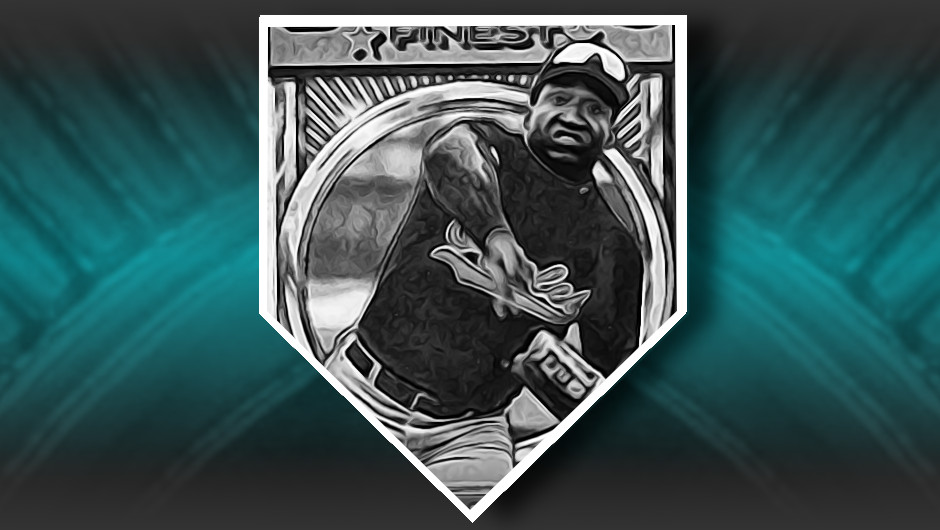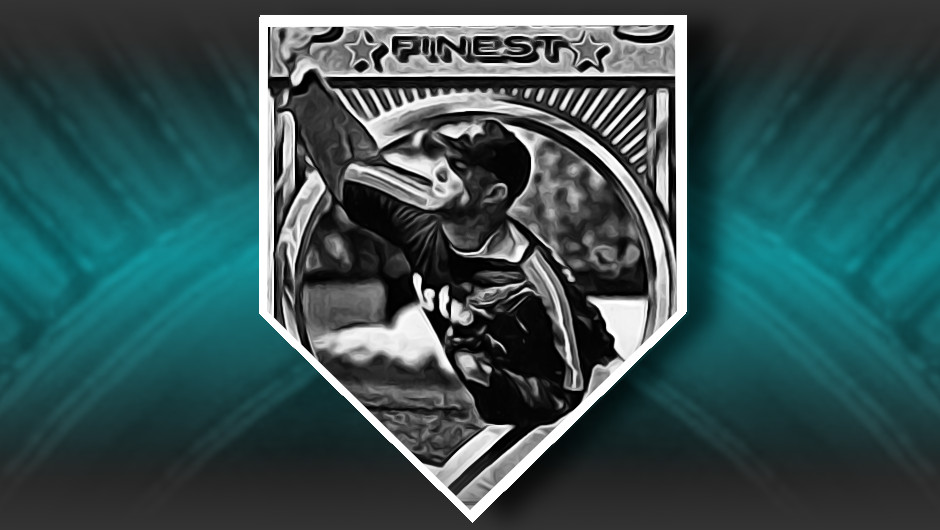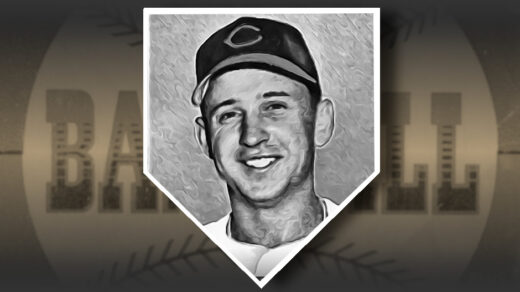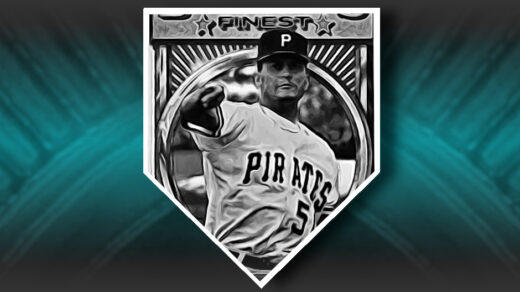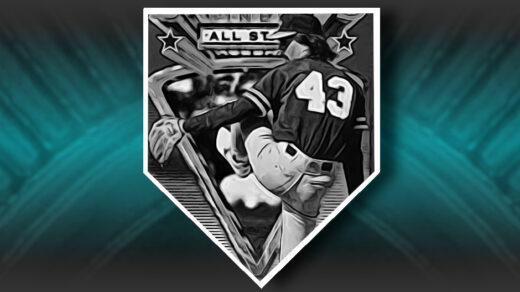Pete Harnisch is one of four Houston Astros pitchers to appear in the 1993 Finest checklist. They all kind of blend together: A bunch of durable guys who could shut down opponents in a pitchers’ ballpark. Perhaps blending in is Pete’s superpower. His 1992 Triple Play baseball card informs readers on the back that he previously worked as one of the extras used in NYPD police line-ups. Left to the imagination is whether or not he posed using the pitching motion portrayed on the front of the card.
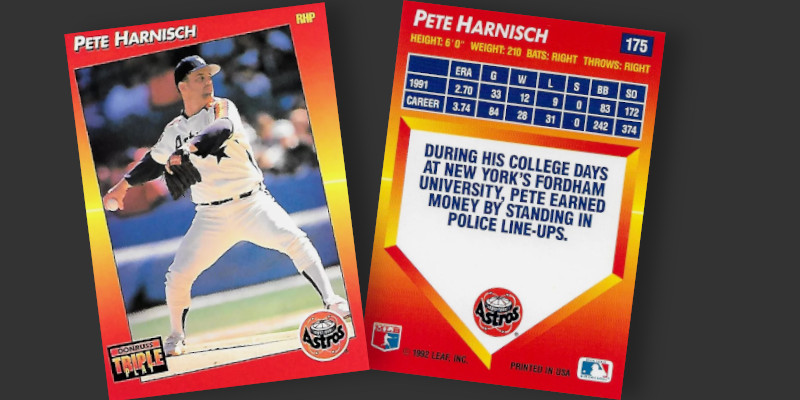
The San Diego Padres’ Jarvis Brown had his career year in 1993 when he batted .233 and was understandably overlooked for inclusion in the ’93 Finest baseball card checklist. His most famous hit of the season came during a plate appearance against Harnisch, the guy slotted into the checklist as card #62. The sixth-inning hit cost the pitcher a no-hitter and raised Brown’s 1993 batting average by more than 7 points. The kicker? This was the only hit of the day off Harnisch and was a toss-up between being scored as a clean hit or an error.
Such pitching wasn’t a one-off event. In 1993 Harnisch was in the process of locking down his second league title for lowest opponent batting average. He could be perfect at times, throwing a 9-pitch, all-strikes immaculate inning in 1991. He could also be efficient, retiring an entire side on exactly three pitches a near-record three times in his career. He is one of 7 MLB pitchers to have retired the side in both formats.
Aside from shutting down other teams with an elevated strikeout rate and an impressively subdued opponent batting average, he was just fun to watch pitch. I don’t mean this as the act of watching velocity, accuracy, and pitch placement, but rather just the motions he employed to fling a baseball in the general direction of a batter. He had a windup that seemed to vary more than most other pitchers, almost as if he was using charades to tell the catcher what pitch was coming. Just take a look at all the arm angles, leg positions, and glove tucks employed on a sampling of his 1990s baseball cards:
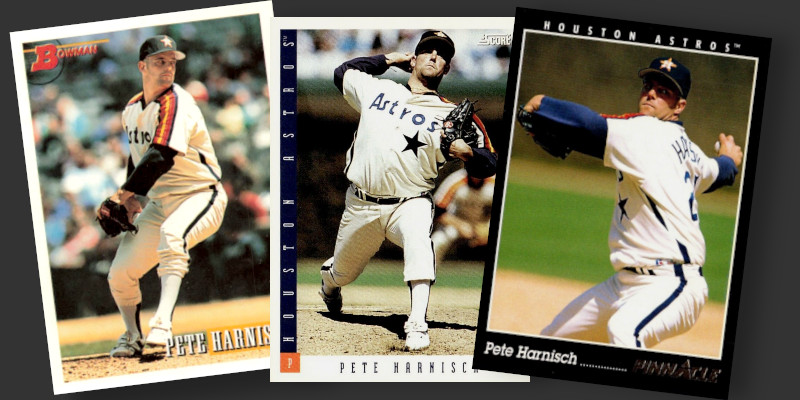
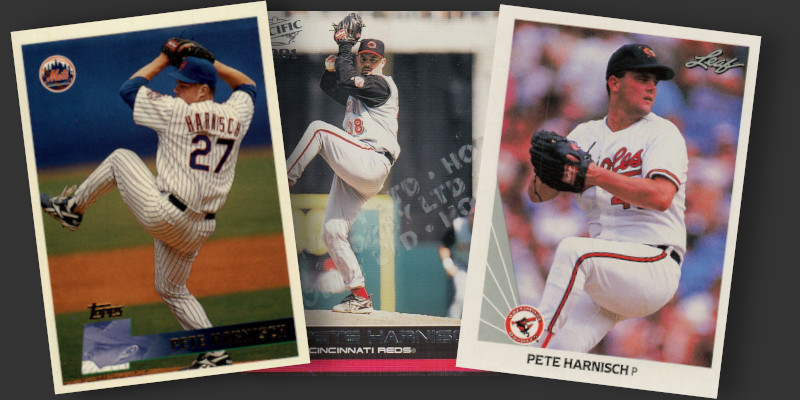
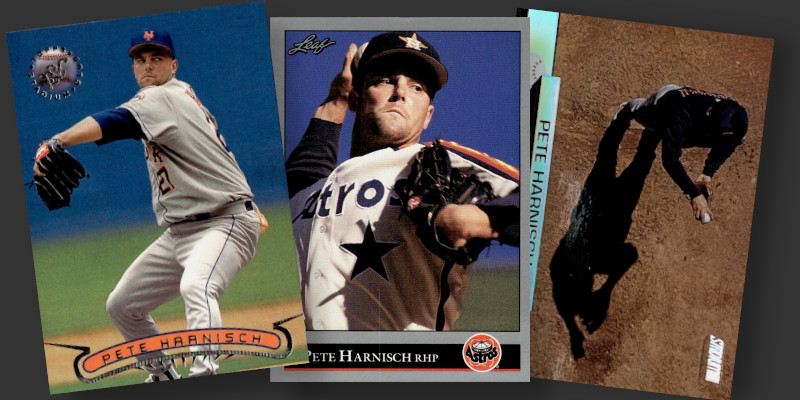
His 2001 Upper Deck card gives the viewer a glimpse into the full range of motion.
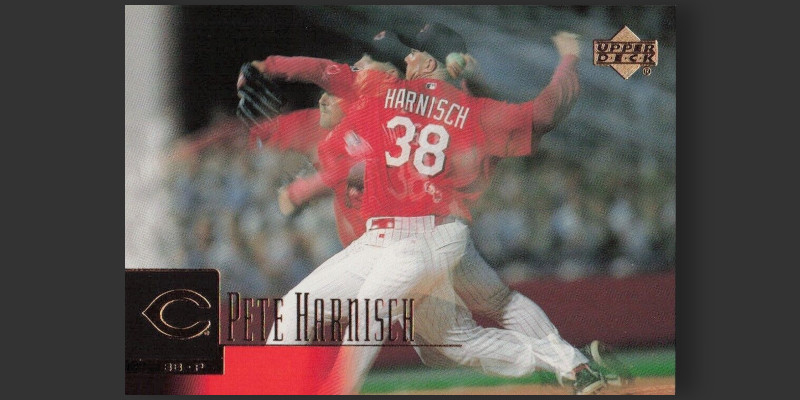
The photographic evidence leaves no doubt that Harnisch was a right-handed pitcher (northpaw?). This is confirmed by reading the obligatory throws/hits demographic on the back of his baseball cards. However, determining from what side of the plate he batted from is not as easy. A few minor league issues and his 1989 Bowman rookie identify him as one of the game’s rarities: A switch-hitting pitcher. However, many of his 1989 cards and every single one issued after that year show Harnisch as a right-handed batter. Many of the online statistics websites, such as Baseball Reference, identify him as a switch hitter. What gives?
While Harnisch had been a switch hitter in high school, prior to his 1991 arrival in the National League he had not so much as taken batting practice since the 1984 release of Ghostbusters. With zero college or MLB batting experience to draw on, it is no wonder that some card companies reached back to reference his batting record from high school. I have no idea what prompted the universal shift to describing him as a right-handed batter 2 years before his first plate appearance, and am even more confused by the fact that Baseball-Reference claims he platooned every single one of his appearances from the opposite side of the plate. A quick perusal of game footage available on YouTube shows him consistently batting from the right side, regardless of which arm opposing pitchers are throwing with.
I don’t know what the purpose of this discussion is. Here are some more pictures of Pete throwing a baseball, courtesy of ’93 Finest:

